Are you going through a long plateau phase with your traffic growth campaign? This is a natural process even for the most well-planned marketing strategy. In this situation, you need tools that will boost the growth and reinvigorate the traffic growth machine.
Microsites can help reduce the noise and distractions produced by competitors. They do so with focused content that goes to a well-targeted sliver of your main audience.
Plus, microsites engage and cater to a more sophisticated consumer. This consumer knows what he/she wants and has high expectations of the brand they choose.
Sounds pretty cool, right? Well, let’s take a look at what makes a microsite so amazing and why it’s different from a regular site. We’ll also go through several interesting real-life examples so keep reading.
What is a Microsite & How It Can Help Your Business
While there isn’t one definition for the microsite, here are a few definitory elements:
- It is a mini-website (it can also be a single page)
- It has a separate domain name URL
- It’s usually temporary (built around a specific campaign)
- It might have separate marketing goals (brand awareness, new product presentation, email list growth, promote events)
- It may include gamification elements for a more engaging customer experience
- Content-heavy (there are no complex sales funnels)
- No main branch information
How Do Microsites Help Your Business?
Microsites help focus on specific goals, which is why many big brands use them in three main scenarios:
- Reach a new audience demographic (if the brand enters a new market, for instance)
- *Build brand awareness *(especially useful in combination with product launch campaigns)
- *Improve results for campaigns *where users must perform specific actions (like subscribe for newsletters)
In summary, businesses can use microsites to raise awareness, increase trust, and attract new customers that otherwise may have never landed on the main websites.
What is the Difference Between a Microsite & a Landing Page
Let’s make one thing clear: a microsite is not a landing page!
But what exactly is the difference between these two marketing tools?
The landing page lives on the main website. Creating a landing page refers to linking significant pages from your original site to this new page. The microsite is usually independent (has its own domain).
Plus, the landing page has a well-defined sales funnel built around a branded product, while the microsite usually doesn’t use the company’s name.
The purpose of a microsite is to target a narrower audience while providing a more focused experience. This way, customers get to learn about your offer/campaign/event without having to browse and click through an entire website.
How To Use Microsites to Generate Targeted Leads [Examples From Real-life Companies]
There is no doubt about it — microsites are useful. However, you have to know how and when to use them to maximize results. Below you’ll find some of the most common goals for microsites and real-life examples of how they work:
1. New Product Launches
Brands often use microsites to place a newly launched product in front of an audience interested to know more. However, the microsite is usually part of a bigger promotion campaign covering multiple channels (social media, email, standard media, and more).
Anyone tempted by the campaign and wants to know more is redirected to the microsite. This way, they get to see only the new product and learn more about its features.
By working with a microsite, the main brand puts the spotlight on the new product. Below you will find a couple of examples of how existing brands are utilizing microsites to introduce new products to their audiences:
The BMW’s X-Series Campaign

BMW used a temporary microsite when they launched their X-series cars in India. The site had its own domain, and it used high-quality videos and images to show users that the X-series was the best car for them.
Plus, as you scrolled down, the site presented tweets that included their campaign hashtag. This way, they connected the microsite and the social media campaign and got people to talk about it.
Webflow’s Event Promotion
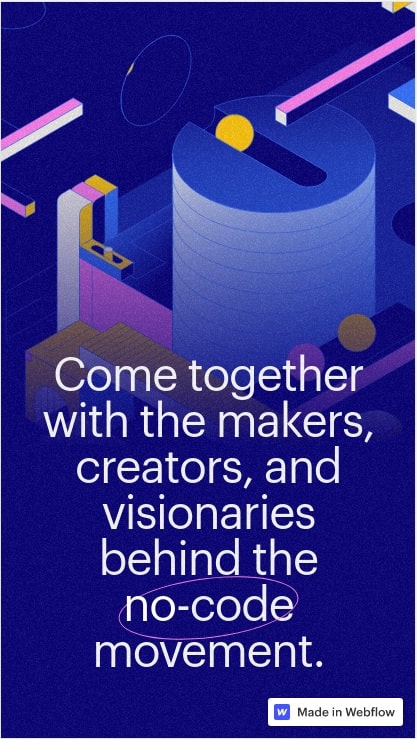
Webflow is an online platform that empowers non-tech people in a high-tech online environment. Their mission is to make it easy for everyone to create astonishing designs, apps, and websites even if you don’t know a single line of code.
They even have an annual event called the No-Code Conference, where celebrities and online content creators come to speak about their experiences. Well, this conference is important for us because they used a microsite to promote it. In this case, the microsite is attached to the main website and uses an interactive interface to build an email list and generate leads.
Goodridge & Williams distillery campaign for Nütrl vodka
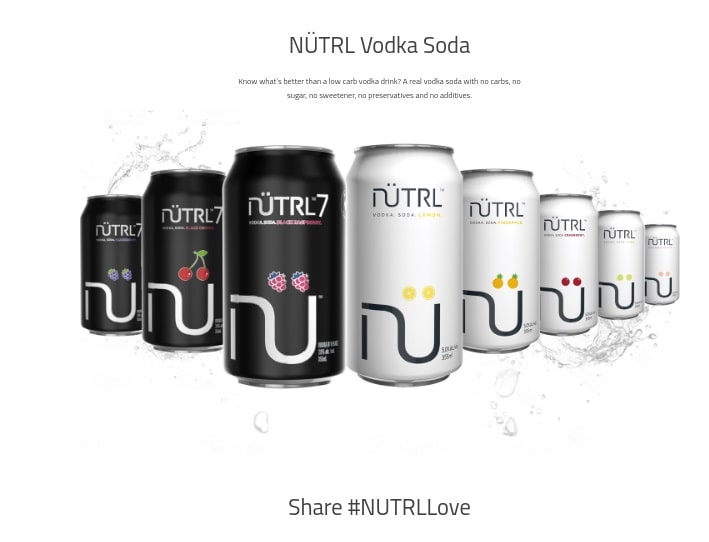
The Goodridge & Williams craft distillery produces several different brands of beverages, among which you’ll also find the Nütrl vodka line. Since vodka drinks tend to have a specific audience, they used a microsite to promote the brand. The microsite talks about the beverage (how it’s made, how it tastes, why to buy it) and connects with the social media campaign via the #NUTRLLove hashtag.
2. Reach New Audiences
Since it’s stock-full of content, a microsite can act as a How-To page delivering information to users interested in learning certain aspects that relate to your product(s).
This way, you can use the microsite as a guide on how to sell ebooks or as a collection of recipes and also tell them about your product that will help with their efforts.
Check out a few of the examples of how microsites are used to reach new audiences:
The ElfYourself.com

Office Max (the brand behind this microsite) offers users the chance to create original holiday cards and decide if to send them virtually or on paper (they have the equipment and supplies).
On the other hand, the microsite is joyful, colorful, and incredibly fun to share with friends and family. This raises awareness and keeps the brand in front of possible new customers.
The Boldare Boards
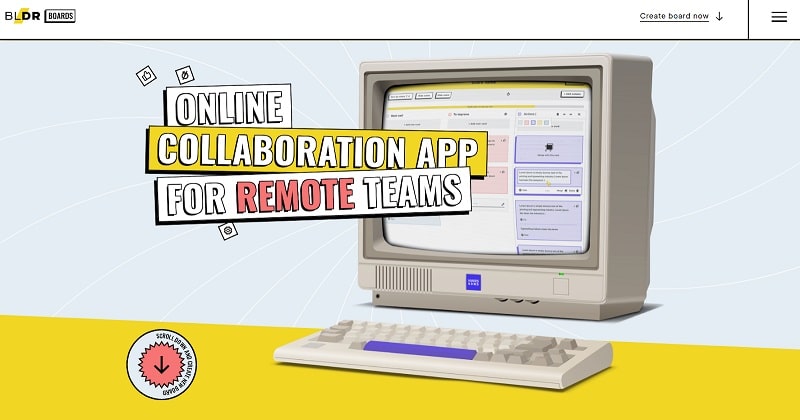
Boldare is a British company that develops digital products for businesses. In an attempt to reach new ears and eyes, they created a microsite that helps people create interactive and easy to organize boards for online meetings for free. There is no obligation for anyone visiting the microsite to become a Boldare customer, but the fact that they get to interact with the interface and then use the board they created puts the Boldare services into focus for more potential customers.
The Colourcode

Don’t you hate it when you need to code for a specific color, and you have to open a photo editing tool to get it? That’s why the ColourCode microsite is such a great way to attract designers and web developers! They come looking for a color code and may end up on the parent site (toptal.com) looking for a freelance gig.
3. Better Google Ranking & SEO
A microsite can help brands (big & small) rank better in search engines since it allows better targeting of niche-specific keywords.
Due to its nature (lots of content on a specific topic), search engine robots will see the microsite as an authority for information about the target keyword. Plus, the fact that we’re talking about an independent site (separate domain) reduces the competition. This makes it easier to climb the ranks and bring in more organic traffic.
Red Bull’s Appalachian Trail Campaign
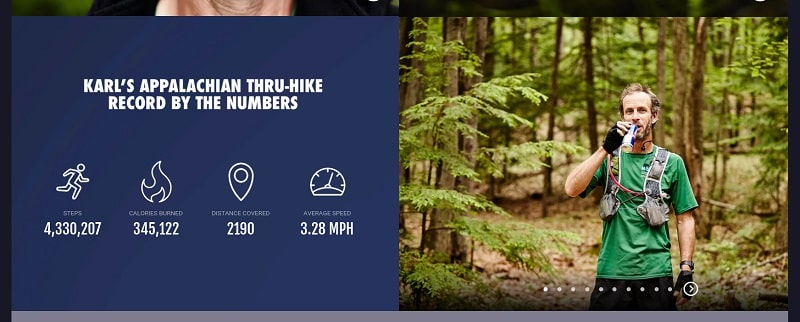
With this microsite, Red Bull positioned itself on the first page in Google for the Karl Meltzer keyword. This way, people who want to learn about the athlete end up on the Red Bull microsite. Plus, these users also see an association between the energy drink and sports, endurance, and courage.
Simply Business’s Guide to CRO
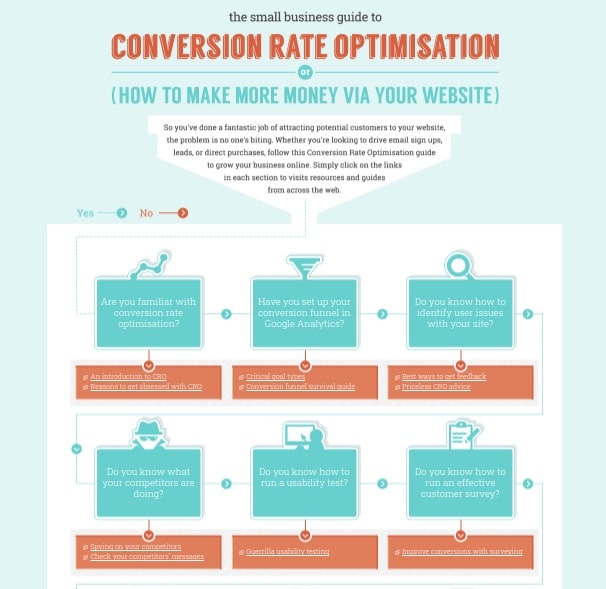
Simply Business created the Small business guide to conversion rate optimization (CRO) to get a better position in Google on searches related to SEO and conversion. The microsite is a very well-designed guide with links to reliable and high-quality resources anyone can find online. However, the interface is extremely useful, especially for people who own a small business and don’t know where to start (these are also part of Simply Business’s audience).
4. Target Audiences Based on Location
Brands that sell internationally or those looking to extend on a new market in a different geographic location can use microsites to target local search keywords.
Audi’s Network of Microsites

Audi has several microsites in different languages, so they will be easier to find by local users. This way, they make sure the brand will always position first in search engines when locals search for “Audi” and related keywords.
Old Dairy Brewer International & Italian versions
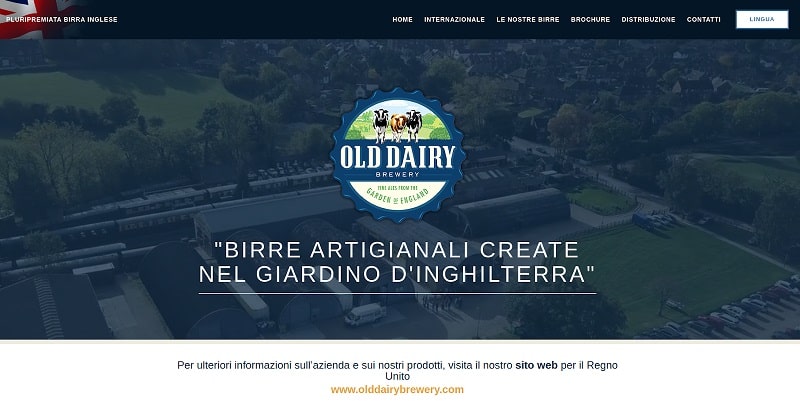
Old Dairy Brewery is a British company with several brands of beer. As their beer started to gain traction on international markets (especially in Italy), they created a separate microsite that targets this audience. This way, the main site does a great job in the UK while Italians and other nations interested in the Old Dairy beer brand can take their information from the microsite (available in English and Italian).
5. Brand Differentiation
Companies that have several brands use microsites as a method to differentiate between them and the main branch. This way, each brand stands on its own and can easily display its individual characteristics and values.
On the other hand, a brand can use microsites to differentiate itself from standard campaigns. This works nicely for audiences familiar with the brand and feel a bit unimpressed by new products or marketing efforts.
Crabtree & Evelyn’s Halloween Campaign
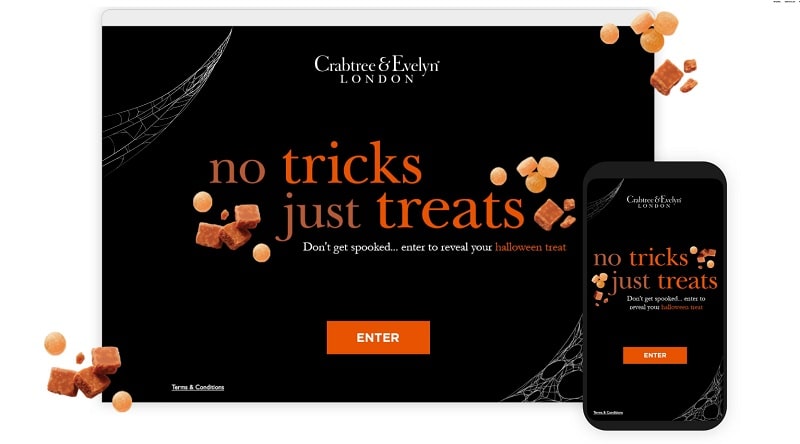
The beauty brand Crabtree & Evelyn used a microsite to promote the brand on Halloween and get more people into their physical stores. The microsite had a completely different user interface from the main website, which helped them differentiate the campaign and provided a fresh view of the brand.
Matt Diggity’s Affiliate Lab Course

Matt Diggity is an SEO specialist and a powerful personal brand in online marketing. The Affiliate Lab is his SEO course for affiliate marketing and SEO, and Matt used a microsite to provide the course with a unique identity, different from the main brand.
#6: Increased Brand Awareness & Engagement
Microsites are great for raising brand awareness and keeping users engaged. Brands can focus on a specific product or an activity to keep users informed and engaged. The secret is to provide information in an easy-to-digest way without having a well-defined sales funnel.
Waterwise’s Every Last Drop Campaign

Waterwise took advantage of consumers’ increasing concern for the environment and sustainable living and built the Every Last Drop microsite. Here, users get to learn about their water consumption and how everything they do has an impact on a larger scale.
But the genius behind this campaign is the user experience! This is not a regular website with a display of information. Every Last Drop is an interactive interface where users participate in the main character’s daily journey. This is what makes the experience memorable!
Afiniti’s Rock, Paper, Scissors

Have you ever played Rock, Paper, Scissors with an intelligent robot? If the answer is no, now you have the chance to try your wits playing against an AI-powered machine that’s designed to learn from your behavior.
The rockpaperscissors.ai microsite was created by Afiniti, which develops AI-powered solutions for businesses and organizations. The interface is friendly and cute, and users can interact with the microsite while also learning how an AI algorithm thinks. This is an example of a unique and fun way of how a microsite can be used for brand awareness, engagement, and customer education.
Markit by Reify

Reify, a marketing company developed the Markit microsite. This is a free tool designed to help brands tell their own story and learn how to use various frameworks and documents to promote their business. It’s a great example of how to increase awareness by giving possible customers something of value.
Microsites Pros & Cons
Given that most microsites have a short life span and that they require quite the time and money commitment, let’s take a look at both sides of the coin:
Pros:
- Interact with narrow audiences with a specific goal in mind
- Improve SEO for niche keywords and Rank in search engines
- Better brand awareness
- Differentiate between brands
- Refresh the brand’s image
- Bring in new, high-quality leads
- Increase engagement
Cons:
- Require a lot of maintenance efforts
- Can get expensive
- There’s a risk of confusing users already used with the brand’s image
- Increased investment in content-development
Learning from other brands’ experience with microsites, it’s easy to see the benefits (aka the pros). So if your marketing budget allows for a new website design and maintenance plus content development, it may be the right way to go for your business.
Related Content
- Local Lead Generation: The Complete Beginner’s Guide
- B2B Lead Generation: 33 Strategies, Ideas & Examples
- How to Create a Lead Generation Machine for your SaaS Business
- How to Generate Qualified Leads with Facebook Advertising
- 25 Easy Tricks for Creating Amazing Email Lead Generation Campaigns
Key Takeaway
At the end of the day, microsites are just another tool in a marketer’s toolkit. When used correctly and with the right mindset, they can produce stellar results. Microsites make fantastic vehicles for promoting a new product launch or reaching new audiences.
Also, you can use them to improve your brand’s SEO or target specific audiences based on location. Also, some companies use microsites to draw a line between a brand and the main company or to raise awareness and promote engagement.
However, they are not for everyone. First, you need a budget big enough to support a new and uniquely branded website (even if it’s a miniature one). Second, microsites don’t usually operate alone. There’s an entire media campaign built around them to keep users engaged with the content and interested in learning more new things.
The key takeaway is that microsites can be incredibly successful when used as part of a well-designed marketing strategy.

Written by our guest writer Jessica Perkins
Jessica Perkins is a writer and SaaS marketing consultant who helps businesses scale up their marketing efforts. She is obsessed with learning and also is passionate about sculpting.



